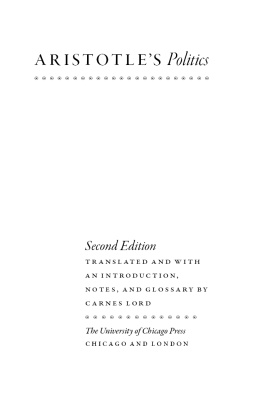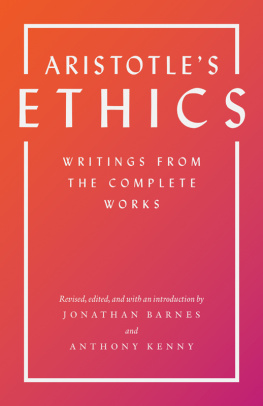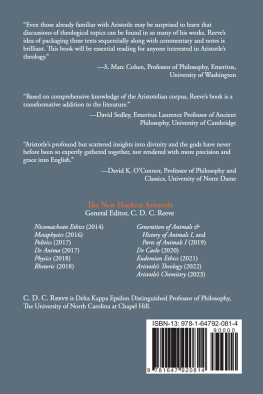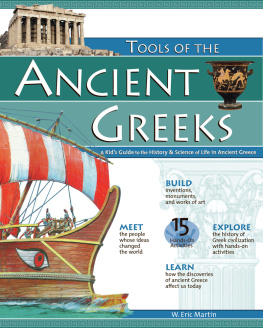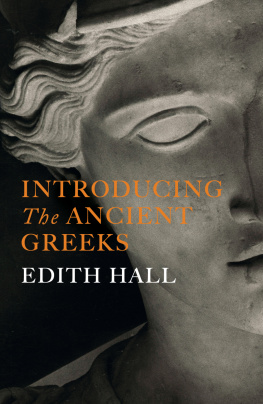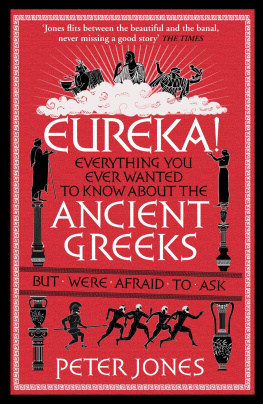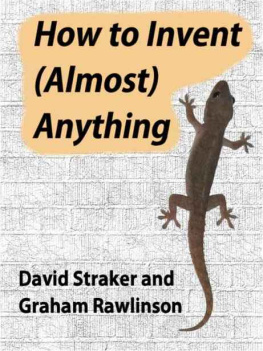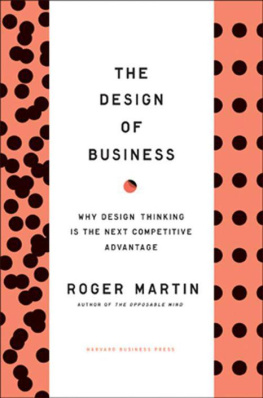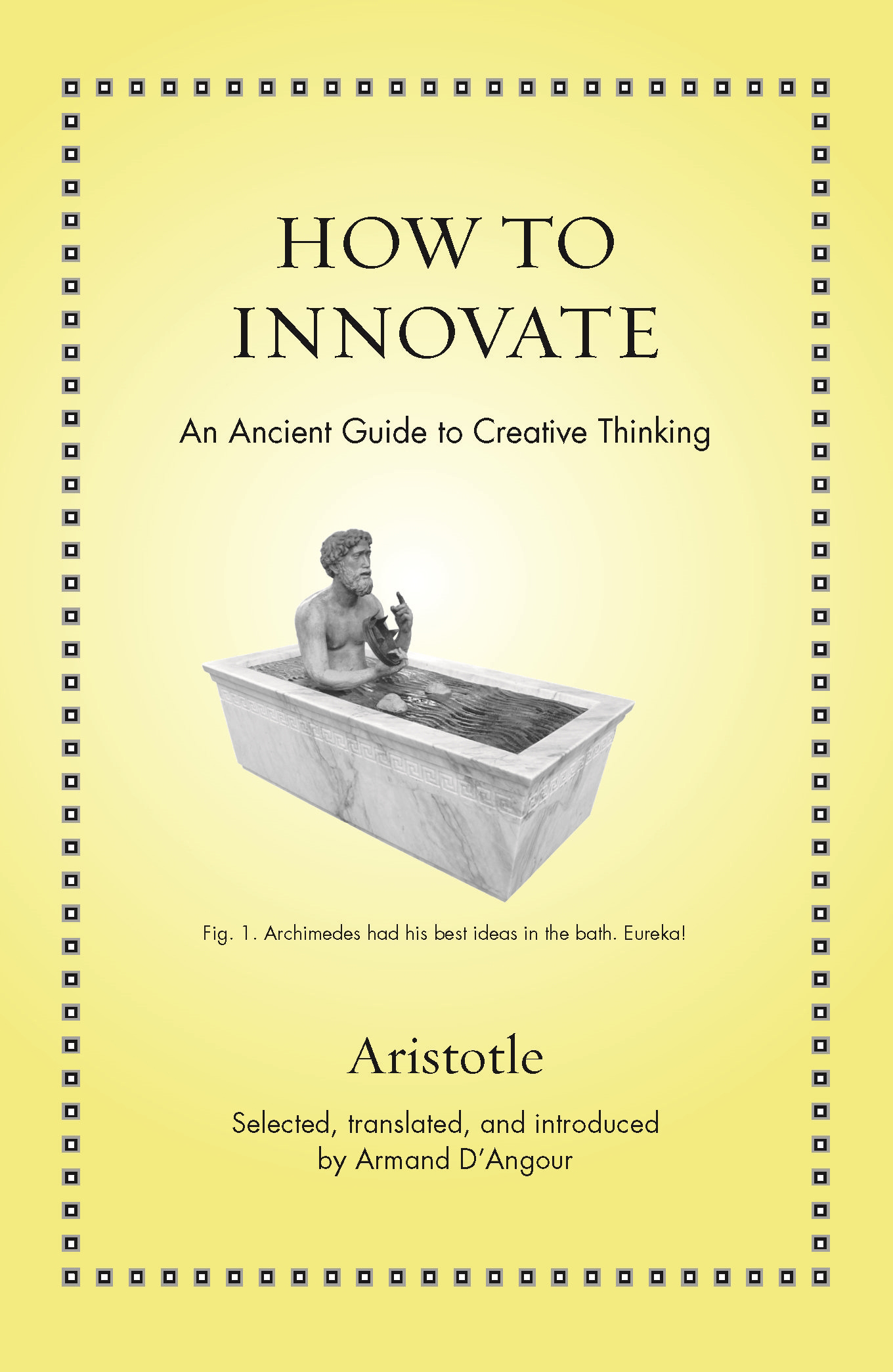HOW TO INNOVATE
ANCIENT WISDOM FOR MODERN READERS

For a full list of titles in the series, go to https://press.princeton.edu/series/ancient-wisdom-for-modern-readers.
How to Innovate: An Ancient Guide to Creative Thinking by Aristotle
How to Be a Farmer: An Ancient Guide to Life on the Land by Many Hands
How to Tell a Joke: An Ancient Guide to the Art of Humor by Marcus Tullius Cicero
How to Keep an Open Mind: An Ancient Guide to Thinking Like a Skeptic by Sextus Empiricus
How to Be Content: An Ancient Poets Guide for an Age of Excess by Horace
How to Give: An Ancient Guide to Giving and Receiving by Seneca
How to Drink: A Classical Guide to the Art of Imbibing by Vincent Obsopoeus
How to Be a Bad Emperor: An Ancient Guide to Truly Terrible Leaders by Suetonius
How to Be a Leader: An Ancient Guide to Wise Leadership by Plutarch
How to Think about God: An Ancient Guide for Believers and Nonbelievers by Marcus Tullius Cicero
How to Keep Your Cool: An Ancient Guide to Anger Management by Seneca
How to Think about War: An Ancient Guide to Foreign Policy by Thucydides
HOW TO INNOVATE

An Ancient Guide to Creative Thinking
Aristotle
Selected, translated, and introduced by Armand DAngour
PRINCETON UNIVERSITY PRESS
PRINCETON AND OXFORD
Copyright 2021 by Armand DAngour
Princeton University Press is committed to the protection of copyright and the intellectual property our authors entrust to us. Copyright promotes the progress and integrity of knowledge. Thank you for supporting free speech and the global exchange of ideas by purchasing an authorized edition of this book. If you wish to reproduce or distribute any part of it in any form, please obtain permission.
Requests for permission to reproduce material from this work should be sent to
Published by Princeton University Press
41 William Street, Princeton, New Jersey 08540
6 Oxford Street, Woodstock, Oxfordshire OX20 1TR
press.princeton.edu
All Rights Reserved
Library of Congress Cataloging-in-Publication Data
Names: Aristotle. Works. Selections. English. | Aristotle. Works. Selections. | DAngour, Armand, editor, translator, writer of introduction.
Title: How to innovate : an ancient guide to creative thinking / Aristotle [and others] ; selected, translated, and introduced by Armand DAngour.
Description: Princeton : Princeton University Press, [2021] | Includes selections of works by Aristotle, Athenaeus, and Diodorus. | Includes bibliographical references and index. | In English and Greek.
Identifiers: LCCN 2021010048 | ISBN 9780691213736 (hardback ; acid-free paper) | ISBN 9780691223599 (ebook)
Subjects: LCSH: Technological innovationsGreeceEarly works to 1800. | BISAC: PHILOSOPHY / History & Surveys / Ancient & Classical | SELF-HELP / Creativity
Classification: LCC T16 .H69 2021 | DDC 609/.009dc23
LC record available at https://lccn.loc.gov/2021010048
Version 1.0
British Library Cataloging-in-Publication Data is available
Editorial: Rob Tempio and Matt Rohal
Production Editorial: Sara Lerner
Text and Jacket Design: Pamela L. Schnitter
Production: Erin Suydam
Publicity: Maria Whelan and Amy Stewart
Copyeditor: Kathleen Kageff
Jacket Credit: Statue of Archimedes in a bathtub, demonstrating the principle of buoyant force. Located at Madatech, Israels National Museum of Science, Technology, and Space. Photo: Aquatarkus / Shutterstock
Thinking new thoughts every day
Democritus, philosopher, fifth century BCE
CONTENTS
- ix
- xiii
PREFACE
It used to be said that the ancient Greeks were not keen on innovation. That view was based on a partial and insufficiently discerning interpretation of the evidence of ancient writings, and historians now recognize that the Greeks were never as disinclined to innovate as had been assumed. In fact, what requires explanation is the conspicuously innovative achievement that has always been recognized as a feature of ancient Greek society. Certain conditions, fertile for innovation, must have allowed for the range of inventions and discoveries that makes ancient Greek culture so influential for its inheritors in subsequent generations.
In addition to these conditions, various mechanisms can be seen to underlie their innovative practices: mechanisms such as the borrowing and adaptation of external ideas, the cross-fertilizing of disparate disciplines, and the posing of disruptive critiques to the ideas and practices of their predecessors.
These principles of innovation were not systematically formulated by the Greeks themselves. They emerge from various writings that address the notion of innovation in different ways. The format of this book therefore, while taking a single and overridingly influential author, Aristotle, to provide the central texts, adduces other less well known ancient sources to illustrate innovations that represent the key mechanisms of the Greeks innovative practices.
Note on the Texts
For ease of matching translation to the original, I have divided up the texts of Aristotle and Athenaeus into shorter paragraphs and provided a new alphabetic numeration for each section. The numbering and structure of the texts of Diodorus is that of the standard scholarly editions. I have aimed to create translations that are both accurate and readable, using the Greek texts (with a few minor variants) of the Loeb Classical Library editions.
INTRODUCTION
Innovation is the driving force of the modern world. In technology, politics, business, art, music, academia, the military, and countless other areas of life, change is constant, and the search for novelty is unremitting. Responses to change range from excitement to fear; change means loss, and when things are changing fast there can be little time to digest what has been lost and to embrace the new. While some may feel a pressure to be innovative, others are perplexed about the meaning of innovation and the value of the new. What is innovation, and how is one to think about creating change?
Athens in the archaic and classical period (around 800 to 300 BCE) was a fast-changing society in which the idea of innovation was, for the first time in the written record, explicitly raised and discussed. The earliest use of a word for forging something new (Greek kainotomia) is found in a comic play by the dramatist Aristophanes, dating from the late fifth century BCE. While its often said that the ancient Greeks were averse to novelty and reluctant to innovate, their writings show that in a range of disciplines they were well aware of the power and advantages of the new. I dont sing the old songs, my new songs are better, run the lines of some lyrics composed by the singer-songwriter Timotheus of Miletus in the late fifth century BCE. A similar promotion of novelty can be found in many other fields of activity and intellectual pursuits of the period.
Despite largely conducting their lives within the bounds of a traditional agrarian society, the classical Greeks were responsible for creating a series of world-changing innovations. Early in the period of their efflorescence they invented the alphabet, by borrowing and adapting letterforms used in the Near Eastern nation of Phoenicia; and the Greek alphabet, as further adapted by the Romans, has been central to communication ever since. They went on to invent philosophy, logic, rhetoric, and mathematical proof; to be the first practitioners of theatrical drama, rational medicine, monetary coinage, and lifelike sculpture; and to create competitive athletics, architectural canons, the self-governing city-state (



